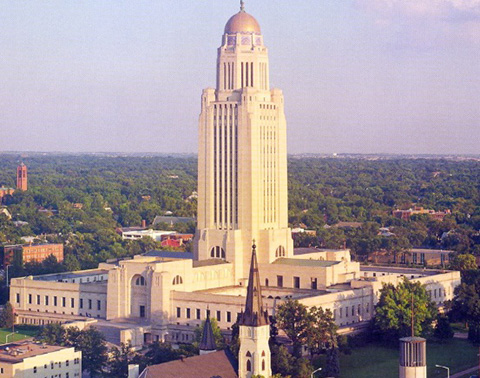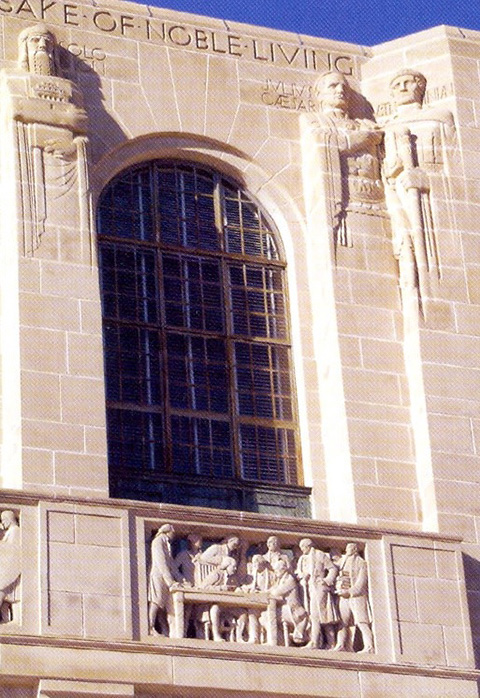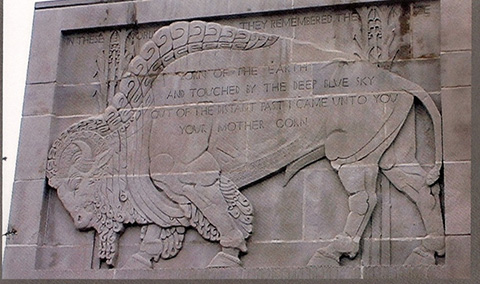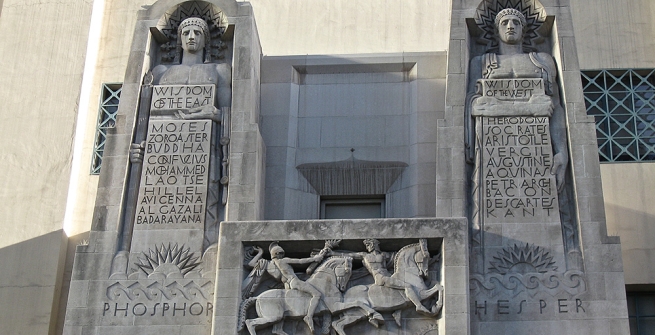If you’ve ever taken a tour of the Central Library, you’ve probably heard mention of Hartley Burr Alexander, the man who worked with architect Bertram Goodhue on the theme and symbolism of the historic 1926 building. But in the course of our one hour tours, we never have enough time to do justice to the vast interests and accomplishments of this Renaissance man.
Hartley Burr Alexander was an educator, author, poet, playwright, philosopher, and early champion of Native Americans. He was born on April 9, 1873 in Lincoln, Nebraska and raised in Syracuse, Nebraska. His father, the Rev. George Sherman Alexander, was a Methodist minister and pioneer newspaper editor. His mother, Abigail Smith Alexander, died when Alexander was three. In 1877 his father remarried Susan Godding, a teacher from the East Coast, who brought with her a love of art, music and language that stayed with Alexander all his life.
Alexander was educated at the University of Nebraska, and went on to earn a PhD in Philosophy at Columbia University in 1901. After graduate school, he remained on the east coast, working as an editor at Merriam Publishing on encyclopedias and dictionaries. In 1908, he returned to the University of Nebraska as head of the philosophy department, and served as president of the American Philosophical Society. He was a prolific writer, and his intellectual curiosity and wide ranging interests led to publication of numerous scholarly articles and newspaper editorials. During his university career he wrote many books and essays on democracy and political thought. He also wrote poems, civic pageants, and light operas. Alexander’s The Pageant of Lincoln was presented by the Lincoln Commercial Club and the Alumni Association of University of Nebraska in 1915.

Hartley Burr Alexander as a young man
Living on the frontier exposed Alexander to the ways of the Native Americans and instilled in him an keen interest in Native American religion and spirituality. In 1890, while still in high school he wrote a poem, To a Child's Moccasin, (Found at Wounded Knee) that bucked the current thinking that "the only good Indian was a dead Indian." He went on to become the first non-Native to seriously study their art, lore, mythology and philosophy, and wrote extensively on the subject throughout his lifetime. His sensitive appreciation of Native American culture informed his approach to philosophy, which biographer Robert Hull described as “ethnological, anthropological, and symbolic.” In 1918, the prolific Alexander wrote that ‘the solution to the problem of maintaining a spiritual community is art,’ and it is art’s function to energize and sustain the common symbols of both religion and politics.

The Nebraska State Capital Building, [1922] bears a strong resemblance to the Los Angeles Central Library, [1926]
Alexander joined architect Bertram Goodhue and Goodhue’s long-time collaborator, sculptor Lee Lawrie, on the design of the Nebraska State Capitol Building in 1922. Alexander applied his depth of philosophical knowledge and cultural awareness throughout his selection of the decorative schemes and inscriptions for the building.

Nebraska Capitol Building-exterior

Detail of Nebraska Capitol bas releif and inscritions
Alexander’s collaboration with the Goodhue team was so successful that he was invited to continue working on their Los Angeles Central Library commission. Alexander chose the enduring theme, “The Light of Learning,” and consulted on the selection of all the sculptures and inscriptions that enhance both the interior and exterior of the structure. In fact, Burr is believed to have coined the term iconographer to describe the work that he did. Alexander’s iconography also enhances the Joslyn Art Museum in Omaha, the Oregon State Capitol, the Fidelity Mutual Life Building in Philadelphia, the Metropolitan Life Insurance Building in New York City, the Century of Progress International Exposition of Chicago in 1933, Dept. of Justice building in Washington, D.C. and Rockefeller Center in New York City.
The collaboration between sculptor Lee Lawrie and Hartley Burr Alexander went beyond public buildings. In 1924, Lawrie created the Alexander family plot marker in Syracuse, Nebraska.
It seems that the philosopher/iconographer enjoyed his time in Southern California so much that in 1927 he accepted an offer to move to Claremont to help develop a new college for women, Scripps College. He quickly became a beloved professor there, teaching philosophy until his death in 1939. His memory endures: The Hartley Burr Alexander Chair is a tenured professorship in the humanities at Scripps, and he is buried in Claremont. His collected works reside at Scripps’s Denison Library.

Harley Burr Alexander bust, Nebraska State Capitol
Alexander’s passion for philosophy did not die with him. His son, Hubert Griggs Alexander, became a professor of philosophy at the University of New Mexico, and his grandson, Thomas L. Alexander, is currently a philosophy professor and Southern Illinois University.
Want to learn more about the historic Central Library? Please join us for a docent-led tour of the Central Library.
—Written by library docent Karina Buck
